
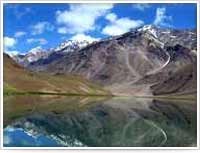
Leh, the headquarters of Leh district, is a small town nestled in a valley north of the Indus river, with narrow intersecting lanes and one main street leading to the old, dilapidated palace of the king. Till not very long back, it was an important trading centre of Central Asia. Yak caravans would take off from Leh over the Karakoram La to Yarkand and Kashgar in the north, Lhasa in the east, and Baltistan in the west.
Leh is dominated by the nine-storey 17th century palace, which is now in the process of being renovated and restored. It was the residence of the Ladakhi royalty till they were exiled to Stok in 1830s.
Situated at the foot of Namgyal Hills, Leh seems to be caught in a time warp. It is a small interesting town and not difficult to navigate around. Houses stacked with wood and dung to be used as fuel for the long winter months fills the old town. There is a mosque at the head of the main bazaar that was commissioned by emperor Aurangzeb, and a polo ground to the south of the town. The road from the airport runs straight to the end of the main bazaar. Fort Road is where most restaurants and quest houses are.
Changspa, a small village on the outskirts of Leh is popular among budget travelers.
Shops selling traditional Ladakhi artifacts line the streets in the main bazaar. Items like tankhas, Buddhist relics, prayer wheels, copper samovars, wooden masks, turquoise and coral stones, hand-woven blankets, cashmere and pashmina shawls, and silver jewellery are available at very reasonable prices after a bit of bargaining. Moti Market has an interesting selection of local crafts and jewellery.
Reasonable shopping places include the Ladakh Art Palace and the Tibetan Handicraft Emporium n the Main Bazaar, and the Ecology Centre, the Women’s Alliance and the Cottage Industries Exposition in Changspa.
Ladakh lies in the rain shadow of the Himalayas, therefore winds reaching Leh are dry monsoon ones, earning it the epithet of cold desert. There are wide seasonal fluctuations, with winter temperatures dropping to -40 and summer temperatures touching +35.
Because of the harsh climate, not much vegetation is found in Leh. Trees like Pencil Cedar, Elms, willow, and Cyprus, and fruits like Apricots and walnuts are among the varieties found. Domestic animals such as the yak, ponies, sheep, kiang, and wildlife such as Nyan, shapo, markhor, wild deer, chiru, snow leopard are seen around Leh.
The best time to visit Leh is between May and October. Leh has an airport that plies flights from Delhi, Chandigarh, Jammu and Srinagar. Flights to Leh from Delhi are nearly always overbooked during peak season, so it is always a good idea to plan well ahead. After October, flights depend greatly on weather conditions.
The other option, which perhaps is more exciting and reliable, is to drive to Leh. There are two land routes, one from Srinagar and the other from Manali in Himachal Pradesh. The Srinagar – Leh road is usually open from June to October, but may vary depending on the snowfall. The road from Manali however, is open for a shorter period, from July to October, the opening and closing depending again on the weather conditions.
Stok GompaBuilt in the 14th century, the Stok gompa is a subsidiary of Spituk gompa, situated about 15 kms south of Leh, and is the place where the last king of Ladakh died in 1974. The oldest part of the gompa are said to be over 500 years old, though the main Dukhang - up a short flight of stairs - in only about 50. Stok gompa belongs to the Gelupa order, and has about 20 resident monks. The entrance walls depict guardian divinities on either side, and the main Dukhang has recently been renovated, and decorated with plenty of banners and tangkhas.
The Chapel is the oldest part of the gompa, with a central image of Tsongkhapa, the founder of the Gelukpa order. There is also a fine display of masks and frescoes.
One of the high points of the gompa is its library, which has a complete set of 108 volumes of Buddha’s teachings. Stok gompa is famous for its festival Stok Guru Tse Cue, on the 9th and 10th day of the first Tibetan month.
The Stok gompa is easy to get to and a popular place to visit.
This gompa belonging to the reformist Gelukpa sect, is a pleasant 2 km walk north of Leh. It is a subordinate monastery of Spituk and is the residence of the Kushak Bakula, the erstwhile abbot of the Spituk Monastery. The Kushak Bakula’s residence is to the north of the complex.
The gompa has paintings and murals of the guardian god of the Four Quarters of Heaven, the wheel of Life, the Old Man of Longevity, Sakyamuni Buddha with his 16 sages and the 35 benevolent Buddhas. There are images of the Budhist deity of compassion, Avalokiteshvara and Yamantaka (god of death), the most impressive being one with a thousand heads, arms and legs.
Leh PalaceBuilt in the 17th century by King Sengge Namgyal, it was abandoned in the mid-19th century when the Kashmiri forces laid siege. The royal then family moved south to the current home in Stok Palace on the southern banks of the Indus. Though it is nine stories high, there is little left to see. It accommodated the royal family in the upper floors, and stables and store-rooms on the lower floors.
It now houses the office of the Archeological Conservation of the Indian government, and remains a testimony to the architectural splendour that was inspired by the Potala in Lhasa.
Shey MonasterySituated 15 kms south of Leh towards Thiksey, the ruins of this former summer palace of the kings of Ladakh is perched high up on a rocky cliff. The 12 m Sakyamuni Buddha statue made of gold-plated copper by King Singge Namgyal’s son Deldan Namgyal, is the largest in the area. There is a small library in the lower chapel and a collection of tangkhas. To the left of the gompa is a huge chorten (stupa) with golden spires, and to its right are the ruins of a fort. Scattered across the nearby fields and along the hill range, are a large number of disintegrating chortens, perhaps the largest collection seen in Ladakh.
Thiksey MonasteryLocated about 17 kms south of Leh, this monastery of characteristic beauty is probably the most photographed, and also the best place around Leh to see a puja. It is a magnificent complex with its red and yellow main building rising grandly above the numerous monk cells. The Chamba lhakhang (‘house of God’ for the Buddha to come) was built in 1980 in hnour of the Dalai Lama and houses an impressive two-storey Maitreya Buddha. This gompa that houses about 500 monks belongs to the Gelukpa sect, and exhibits excellent works of art.
The roof of this monastery provides a panoramic view with the Zanskar range in the backdrop.
Hemis gompa, built under the patronage of Ladakhi king Sengge Nampar Gyalva in 1672, belongs to the kagyupa order (red hat sect), and is also known as Chang-Chub-Sam-Ling (the place of the compassionate one). Located 45kms from Leh, it is surrounded by streams and long mani walls and is one of the most accessible and popular gompas. It is the most important gompa in terms of spiritual hierarchy and also the richest.
It has a simple dukhang on the right, and several smaller shrines upstairs. It houses the largest tangkha in Ladakh (12 m), embellished with pearls and semi-precious stones, which is unveiled once every 12 years, the next public viewing being in 2016.
Hemis monastery is best known for its festival held in commemoration of the renowned Indian sage Padmasambhava. The festival known as the Hemis Festival is held on the 9th to 11th day of the fifth Tibetan month.
There is also a sacred hermitage above the Hemis Monastery.
Hemis FestivalLocated 45kms south of Leh, Hemis is one of the most accessible and visited gompas in Ladakh, besides being the most important in terms of spiritual hierarchy. It has a population of about 500 resident monks. The Ladakhi royals continue to be ardent patrons of this monastery.
The Hemis Tse Chu held in June, commemorating the birth of the renowned Indian Guru Padmasambhava is one of the most famous monastic festivals of Ladakh.
This two-day festival features a series of mask dances by the lamas, both young and old, culminating in the destruction of the Storma (sacrificial offering) on the last day. The colourful masks and fine silk costumes worn by the dancers represent carious guardian divinities of the Drugpa order to which Hemis belongs. The dance depicts the magical feats of Padmasambhava in his eight manifestations to defeat the enemies of Buddhism.
Every twelve years, the 12 metre long tangkha of Padmanasambhava is displayed. The next exhibition of this tangkha, richly embroidered in pearls and semi-precious stones, is due in 2016.
Excursions to Khardung PassKhardung la (5359m) is the highest mountain pass in Ladakh. It is almost always covered in fog and snow, and is the alleged to be the highest motorable road in the world. It is the gateway to Shyok and Nubra valleys and is situated 37kms north of Leh. This short route takes about 2 hours to cover.
The first 24 kms from Leh to South Pullu check point are paved. From South Pullu to North Pullu check point, beyond the pass, the road is narrow and broken, being as it were, made up of loose rock, dirt, and occasional rivulets of snow melt.
There are daily bus services from Leh to Nubra Valley, however, the best way to Khardung La is by a taxi or a bike.
Pangong TsoSituated at a height of about 4,300m Pangong Tso is the largest brackish lake in Asia, with a larger part of it extending into Tibet. It is 130 kms long and 5 kms at its widest point. Despite being a salt-water lake, it freezes completely during winter. There is no marine life here, save for a few migrating birds now and then like gulls and brahminy ducks.
Being in the border, the furthest point one is allowed to go to, is Spangmik, about 7 kms along its western bank, but it is enough to take back the most beautiful memories of Ladakh. The very barren-ness and vastness of the area contributes to its striking beauty.
It is an approximate 5/6-hour jeep ride from Leh, and since there are no facilities here, it is a good idea to bring a packed lunch for a day-trip.
Tso moririKnown as the ‘mountain lake’, Tso Moriri is located in Changthang region, about 240 kms southeast of Leh. Surrounded by the Trans-Himalayan range and the Greater Himalayas, it is one of the highest lakes in the world situated at an approximate altitude of 4,500m. It is about 30 kms long and 8 kms wide. The amazing colours of the water against the stark backdrop of barren hills and snow-capped mountains, gives this lake its character.
Because of the absence of continuous slopes for good drainage of water, the snow of the winter melts during summer and collects in basins, to form brackish lakes in this region. Tso Moriri is a fresh to brackish water lake.
It is a breeding ground for a number of birds such as the Black-necked Crane, bar-headed Goose, and the Ruddy Shelduck. It is unique with respect to the flora and fauna it supports, and as a result of being in the middle of a cold desert, a number of birds and animals come for a drink.
The Korzok monastery to the west of the lake is said to be one of the oldest settlements of the world.
Lamayuru-Likhir-AlchiA day trip out of Leh to Lamayuru, on the Leh-kargil highway, through alternating landscapes of barren-ness, lush green meadows and imposing mountains can be an exhilarating experience. Stopping by at Likhir and Alchi villages and visiting their awesome monasteries, the trip could take 5 hours one way, depending on the length of stops.
Alchi is a small village situated about 67 kms from Leh, on the banks of the river Indus. It is famous for one of the oldest monasteries in Ladakh known for its murals and frescoes of the 11th century. This monastery exhibits a lot of Indian influence, being founded by the great translator Lotsawa Rinchen Zangpo on his return from India, after having received Buddhist tutelage. If one wants to experience a Ladakhi village, then Alchi is the perfect one for it. Alchi has comfortable guesthouses with modern facilities for any one wanting to stay overnight.
The village of Likir, situated about 52 kms from Leh, dates back a thousand years though most of the current houses were built in the last 200 years. On the outskirts of the village is the Klu-kkhyil Gompa, which belongs to the Yellow Hat order. The name Klu-kkhyil means snake coil and refers to the shape of the hills that surround the monastery which is nestled amongst high mountains and has been destroyed and rebuilt several times. The current building was rebuilt in the 18th century and re-dedicated to the Gelukpa order. It has a large collection of Buddhist art works and is remarkable for its 25m out door statue of a seated Buddha. There is a small museum, which can be opened on request and for which a small fee is charged.
Lamayuru village is situated about 127 kms west of Leh. Visit its gompa, founded in the 10th century, is one of the largest and oldest ones in Ladakh, with a resident population of 150 monks. It is renowned for its two annual festivals, in the 2nd and 5th Tibetan months.
Facing the village is the remains of what might have been a lake, which locals refer to as 'moon land'.

Best of Leh - Kashmir
Duration : 17 N / 18 D
Routing : Srinagar - Gulmarg - Pahalgam - Sonmarg
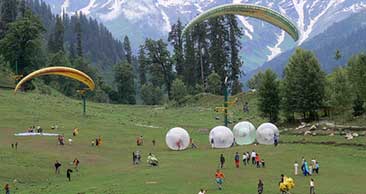
Best of Leh - Manali
Duration : 18 N / 19 D
Routing : Amritsar - Dharamshala - Manali - Sarchu

Glimpses of Leh - Ladakh
Duration : 9 N / 10 D
Routing : Leh - Lamayuru - Alchi – Likir
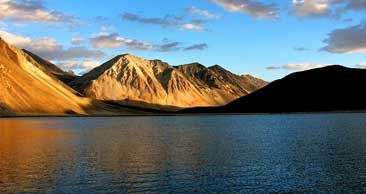
High Altitude Lake Tour
Duration : 9 N / 10 D
Routing : Leh - Uleytokpo - Pangong Lake
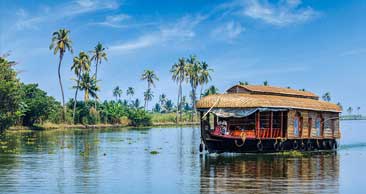
Kerala with Ladakh
Duration : 20 N / 21 D
Routing : Cochin - Munnar - Periyar - Kumarakom
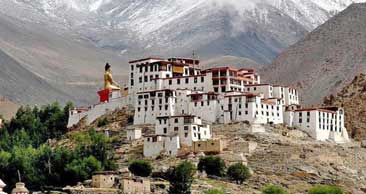
Ladakh Cultural Tour
Duration : 8 N / 9 D
Routing : Leh Monasteries - Lamayuru - Alchi

Ladakh with Golden Triangle
Duration : 17 N / 18 D
Routing : Delhi - Jaipur - Agra - Delhi – Leh - Lamayuru

Ladakh - Kashmir Tour
Duration : 11 N / 12 D
Routing : Delhi - Leh - Pangong Lake - Leh - Alchi
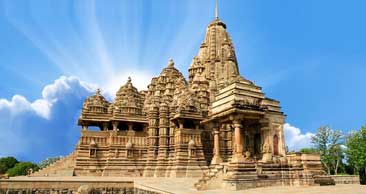
Ladakh with Classical India
Duration : 21 N / 22 D
Routing : Delhi - Jaipur - Agra - Jhansi - Khajuraho
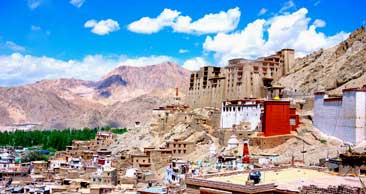
Ladakh with Taj
Duration : 16 N / 17 D
Routing : Delhi - Agra - Leh Monasteries - Lamayuru